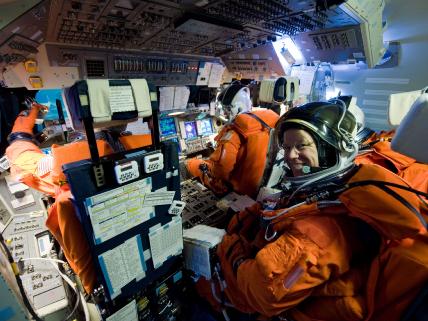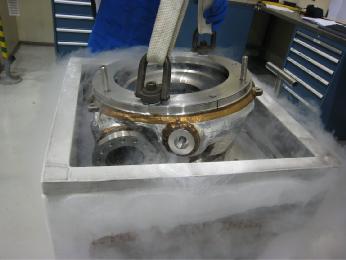Astronomy Tonight Facts of the Day
- Jupiter's huge gravity well draws in any comet or asteroid traveling too close to this gas giant
- Clay-carbonate rocks found on Mars are both similar to Earth rocks and believed to contain evidence of possible life
- Astronomers recently determined that the axis of a titantic black hole they have been viewing has apparently been moved by some unknown force
- Scientists looking at protons recently determined that these fundamental building blocks of nature are in fact smaller than first thought
- Neutrinos are one of the lightest fundamental building blocks of the universe and in fact lighter than scientists first thought
- Fermilab recently announced it has ruled out about a quarter of the possible masses for theoretical Higg bosons
- Astronomers looking at the giant star cluster R136a in the Large Magellan Cloud have discovered a star weighting some 256 times the mass of our sun
- Astronomers looking at hypervelocity star HE 0437-5439 believe this stars speed could be the result of the Milky Way's central black hole capturing one star of a triple star system, while the other two stars fused together
- Astronomers looking at the data returned by the Cassini spacecraft's radar instruments recently found that the level of he liquid methane lakes on Titan have dropped during the past several years
- Scientists recently released the first all-sky survey showing both the Milky Way and the light from 380,000 years after the Big Bang using the NASA and European Space Agency's Plank satellite
- The IceCube Neutrino Observatory at the South Pole recently detected an unusual pattern in the relatively intensity of cosmic rays
- Astronomers recently detected the complex and large carbon molecules known as buckyballs in the planetary nebula Tc 1
- Jupiter is so large it would take 11 Earths wedged side by side to cross Jupiter's width and about 1,000 Earths to fill Jupiter's volume.
- Planet scientists studying the surface of Venus must use radar to see beneath Venus's thick blanket of clouds.
- Uranus's rotation axis lies in its orbital plane, so night and day at the poles of Uranus last about 40 years each.
- The atmosphere of Saturn's moon Titan is actually thicker than the Earth's, and like Earth's atmosphere, contains mostly nitrogen.
- The surface of Jupiter's moon Europa shows ridges cracking the surface of Europa that could be sites where slushy liquid water erupted through the icy surface and then froze.
- Jupiter's moon Io has more than 100 active volcanoes and is considered the most volcanically active object in the solar system. The volcanoes on Io have plumes that reach 100 miles above the surface of Io and spread debris over thousands of miles.
Astronauts Bravely Journey to the Planets
The new adventurers, astronauts are the new heroes of the human journey to the beginning of the universe and in the centuries to come astronauts will voyage to where-no-man-has-been-before in an attempt to provide mankind with the answers to questions asked by the first star gazers, and search for a new planet to be the cradle for a new human genesis.
Astronomytonight Journeys to the Beginning of the Universe
Take a walk in the darkness of the night to the darkest spot you can find with an open, clear sky and look upward at the heavens above you as the first star gazers did thousands of years in the past. Spend a few nights gazing upward at the lights in the night sky and you`ll probably at first think the motions of the lights in the night sky are random in nature. In fact, the motions of the stars above you follow an age old pattern science can predict to the inch using the magical language of mathematics. Journey to the beginning of the universe using a telescope from this same dark sky spot and the night sky above you opens into an infinity of stars you`ll find hard to believe. A journey that expands your mind and the possibilities of the universe around you and gives you the opportunity to be part of the human journey to the beginning of space and time in the years ahead of you.
Astronomy Picture of the Day:
STS-133 commander Steve Lindsay, pilot Eric Boe and mission specialist Tim Kopra and Alvin Drew going through the paces in the motion-base shuttle mission simulator at NASA's Johnson Space Center.
NASA photo
Astronomy Picture of the Day:
The Crab Nebula at right spreads outward from a central source astronomers believe was a supernova.
NASA photo
Click on the Astronomy for Kids link at the top of this page for the latest news and educational information on the world of astronomy for kids. Looking for the information on the formation of the solar system, the Milky Way Galaxy, astronomy magazines or astronomy blogs, or maybe you just want to know when the New Moon will occur. Astronomy Tonight has everything the young or amateur astronomer could want to discover about the universe.
Astronomy Picture of the Day:
NASA's J-X2 engine will be used to power spacecraft of the future.
NASA photo


